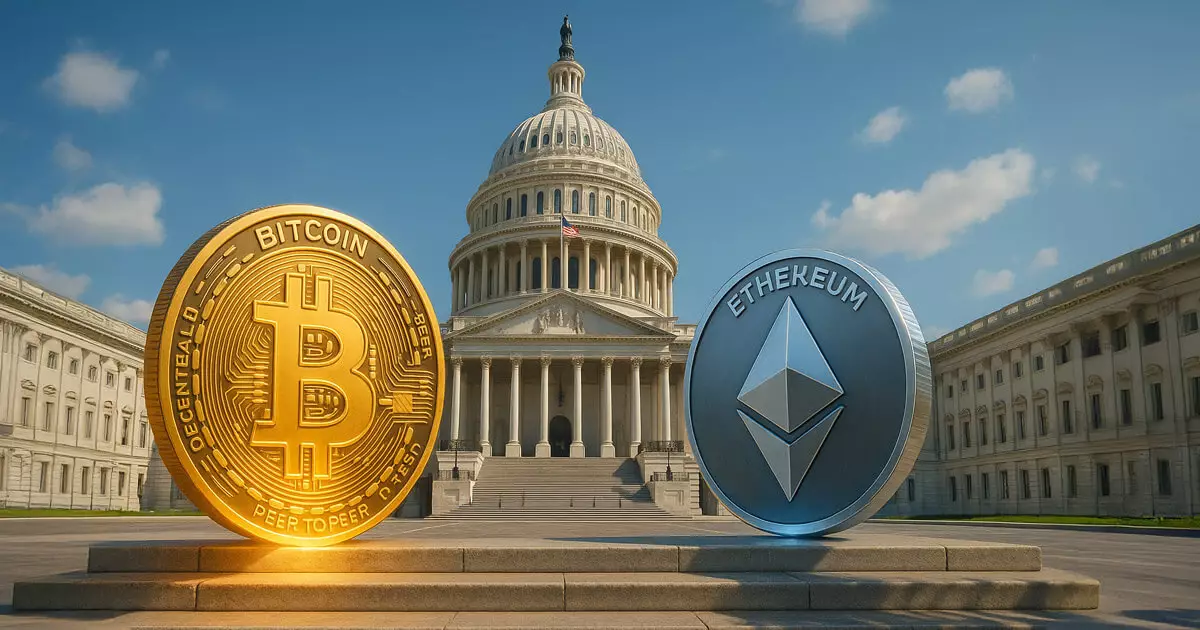In a climate where innovation rushes ahead of regulation, the recent call by twelve Democratic senators for bipartisan action on crypto legislation reads more like a façade of consensus than genuine agreement. While these lawmakers claim a desire for “true collaboration,” their underlying motives reveal a dangerous naivety and an underestimation of the risks involved. True oversight is not just about slapping regulatory labels on digital assets but about safeguarding the integrity of financial markets and protecting investors from a reckless Wild West environment. Politicians so eager to lead with fast-track legislation often discount the fundamental importance of rigorous checks and balances, favoring superficial band-aids over comprehensive reforms that could stand the test of time.
The False Promise of Uniform Regulation
The proposed framework attempts to carve out a regulatory space where both the Commodity Futures Trading Commission (CFTC) and the Securities and Exchange Commission (SEC) have expanded authority. Their plan hinges on defining digital assets into two categories: security tokens and commodities. It seems logical—at first glance. However, history demonstrates that the very act of trying to neatly compartmentalize complex financial innovations often results in regulatory loopholes and obsolete rules shortly after adoption. Assigning the CFTC full jurisdiction over spot markets for certain digital commodities risks oversimplifying a rapidly evolving landscape. This piecemeal approach ignores the nuanced realities of blockchain technology, decentralized finance (DeFi), and the global nature of digital assets. It reduces a complex, borderless sector to a regulatory sandbox that may soon become outdated or exploited by those seeking to evade oversight altogether.
Spotlight on Regulatory Overreach and Its Consequences
The push for extensive registration, disclosures, and enforced compliance across all digital asset platforms—centralized or decentralized—amounts to nothing short of regulatory overreach that could stifle innovation and entrench established financial players temporarily at the expense of true progress. The inclusion of DeFi protocols under oversight models designed around traditional finance paradigms suggests a fundamental misunderstanding of what decentralization entails and what it demands from regulators. Responding with blanket regulation risks creating a regulatory environment as fluid and cumbersome as the assets it aims to control. Moreover, incentivizing overregulation discourages entrepreneurs and innovators from exploring frontier technologies in America, potentially ceding leadership in digital finance to less transparent jurisdictions.
The Illusory Balance Between Innovation and Protection
While the legislation claims to strike a balance between fostering innovation and safeguarding investors, its actual implications lean heavily toward control at the expense of progress. The proposal’s restrictions on stablecoin interest-bearing products, combined with its extensive oversight demands, serve as disincentives for entrepreneurs and existing market players. Instead of facilitating a dynamic digital economy, the legislation risks turning the United States into a regulatory fortress—hostile to experimentation and rapid adaptation. Rather than encouraging responsible growth within a coherent legal framework, the approach inadvertently promotes stagnation by overburdening innovators with red tape, making it unprofitable or merely too cumbersome to operate freely.
The Political Game and Its Impact on Market Confidence
Politicians’ eagerness to insert themselves into digital asset regulation is at odds with the nature of technology-driven markets that thrive on flexibility and decentralization. The push to prevent officials’ profiting from tokens and mandate disclosure of holdings seems driven more by political optics than genuine concern. This political posturing fosters distrust rather than confidence in the sector. Investors and entrepreneurs alike are increasingly wary of government overreach, recognizing that regulatory uncertainty hangs over their ventures like a sword of Damocles. The desire to impose rapid, top-down rules—rather than fostering a thoughtful, adaptable regulatory environment—destabilizes the nascent market, risking a flight of capital and talent to jurisdictions with more pragmatic approaches.
Final Reflection: The Priorities We Must Reconsider
The current push for comprehensive crypto regulation, driven by a mixture of political bravado and outdated economic thinking, is likely to produce more harm than good. It reflects a fundamental misunderstanding of what decentralization means and how innovation in digital finance truly operates. Instead of viewing regulation as a framework that enables progress while protecting consumers, policymakers appear to see it as an opportunity to impose hurdles that could kill the future growth of this sector. If America wants to remain competitive in financial innovation, it needs to prioritize clarity, flexibility, and sensible oversight—values that are fundamentally incompatible with hurried, overbearing legislation that ultimately favors established interests over true progress.

